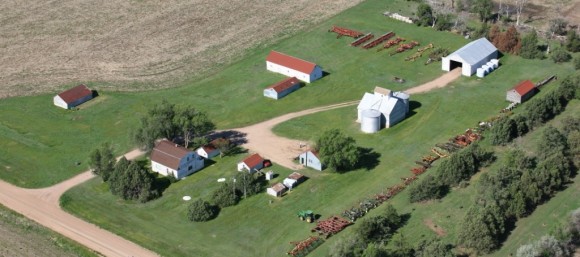For those settlers arriving in the 1880s and 1890s, the farmstead complex generally began with a sod house and barn. By the turn of the century, frame buildings became more common. Many of those homesteading or buying land came out before their families in order to construct the essential buildings needed house his family and livestock. These two functions could be combined with the family living in a barn lean-to while constructing a more permanent home as was done on the Seger (5PL.74) and Flacker (5PL.217) farms. They might also build small structures that could later be converted to other uses, such as the garage on the Colglazier farm (5PL.263).
The survey recorded an average of five buildings per farmstead complex in the survey. However, the number is actually likely much higher since the dense windbreaks prevent many resources from being visible from the road.
Farmsteads in Phillips County generally tend to be located fairly close to the road. Large windbreaks shelter the farmsteads from the frequent high winds on the plains. The windbreaks are generally located on the north and west sides of the farmstead. On the farmstead complex, the house is generally located closest to the road. Most houses face the road. Other buildings generally tend to be located to the rear of the house, clustered around a large farm yard area. Driveways lead from the road to the center of the farm yard.
Most farmstead complexes include buildings and structures performing the following functions: domestic, livestock, grain & feed storage, equipment storage & workshop. Some buildings like barns serve multiple functions. The types of features present tell the history of the varieties agricultural production on the farm. The following pages present an overview of the common types found on Phillips County farmsteads.




